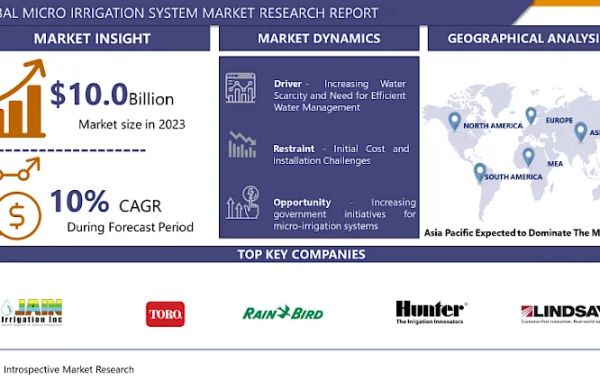Hello, I’m glad to present my article. As a professional writer, I constantly write lots of perfect essay and topics on a variety of topics and welcome you to read many more of them on my website.
Enjoy your reading!
IntroductionPoliticians and economists promise an economic growth, prosperity and raising living standards. However, the existence of a system of objective indicators that would allow residents of a particular country hope for an increase in its wealth due to certain technical innovations or political innovations is in doubt. The main criterion of economic efficiency is the degree of satisfaction of the final needs of society, and first of all the needs related to the person development. Despite all attempts to formulate an aggregate indicator of the effectiveness of the functioning of the national economy, which would reflect the level of economic development of the country, such an indicator does not exist due to the numerous difficulties in bringing together the value and subsistence values, the costs of skilled and unskilled labor, etc. However, there is an indicator allowing correlation of the aggregate results of the work of society for the reporting year.
Criteria of the effective economy
The economic system has social and economic efficiency if it provides the greatest satisfaction of the diverse needs of people, and guarantees a high level and quality of life. The basis for this efficiency is the optimal distribution of available resources among the society between sectors, industries, and spheres of the national economy. The effectiveness of the economic system depends on the efficiency of production, social sphere including education, health, culture (Taylor Uhlig, 2016), and the effectiveness of public administration. Within the system of national accounts, the gross domestic product is the main indicator characterizing the annual output. GDP is the aggregate market value of all final goods and services produced in the country with the help of both national and foreign factors of production within one year (Michl, 2015).
Figure 1. Economic growth as growth in GDP.
Leading economists determine the performance of a country in terms of consumption level and its dynamics . The growth in consumption shifts the GDP curve to the right and means the economic growth. To assess the well-being of the society, the GDP per capita is also used. This is GDP divided by the number of people in the state (Boyes, Melvin, 2015). It seems to be an objective indicator of assessing the living standards of every citizen of the country. However, in fact, GDP per capita is not an indicator of its overall well-being. If there are many poor in the state, but at least a small number of very rich people are present, the country's GDP may be large, although the real difference in the incomes of its citizens is enormous. The example of such distribution of wealth is an example of the called exploitation by Karl Marx when one person appropriates the results of the labor of another.
Traditionally, it is believed that DGP characterizes the standard of living and the dynamics of the welfare of society (Hubbard, Garnett, Lewis, O'Brien, 2014). However, the increase in any value does not mean that there was an economic growth: it may be that because of the distribution of GDP, the rich will become richer and the poor become poorer.
GDP informs people of the general material condition of the nation since along with the increase in the level of production, the welfare of the state also grows. At the same time, GDP does not reflect the social state of the nation.
In addition, the GDP does not take into account the free time of citizens. In fact, its availability also allows judging the life level of the society. GDP does not take into account the improvement of the quality of goods, as well as any changes in the consumption and distribution of goods among people.
Besides that, GDP does not include some activities that affect the standard of living of people. These include non-market operations (repair of cars and houses, household, free labor of scientists, etc.) and the shadow economy. GDP can grow due to the increase in social problems and crimes. The calculation methodology of GDP treats the growth of crime, accidents, divorce, natural disasters and other negative social phenomena as an economic benefit, resulting in GDP growth. The growth of crime adds millions to GDP due to the need to issue new locks that are more reliable and other security measures, to increase police protection measures, and medical expenses. Family divorce adds GDP through lawyers' fees. Natural disasters contribute to GDP by creating the need to restore damaged property, increasing the cost of medical care and providing jobs for rescue services.
Therefore, GDP cannot be an indicator of the well-being of the population. Behind the formal figures, there are numbers of diverse and hard-to-take sociological data that should be considered to obtain a complete picture. Considering the listed deficiencies in the GDP indicator, leading scientists and organizations of the world began an active methodological work for developing adequate indicators of the population well-being than GDP. These indicators should reflect the economic, social and environmental aspects of meeting the needs of the modern generation without limiting the opportunities for future generations.
The economic growth reasons
The uneven level of economic development in various countries is a phenomenon that is mainly characteristic of the last three centuries.
In the middle of the XVIII century, the inhabitants of Western Europe on average had about the same level of material welfare as the population of China. In fact, it did not differ from the standard of living in Ancient Greece or Rome. Only a minority of the population had a much higher income than the minimum living, and the elite classes of different states had little or no reason to be jealous of each other. However, around 1800 it became evident that a wealthy minority in European countries whose incomes were higher than the subsistence minimum began to increase numerically (Boyes, Melvin, 2015).
For the period from the middle of the XVIII century to today, the income per capita has increased 15 times. The population in Europe has grown fivefold, and in the United States - 80 times. Child mortality has sharply decreased, and the average life expectancy has doubled. Such phenomena as hunger and epidemics disappeared. If earlier in some countries in the production of food products 90% of the working population was employed, now this figure does not exceed 5%. Urbanization in the XIX century was accompanied by the technical progress in the water supply, sewerage, construction, communications, energy distribution and other types of public services. Urbanization and income growth have led to an increase in the standard of living of people, improving their health and working conditions, have changed the value system and have introduced many new things into personal, family and social life.
Examples of how poor or impoverished countries suddenly overtook more developed states, cause admiration, envy and sharp disputes about the causes. The successes of oil-rich countries such discussions do not cause, as they remind stories about people who unexpectedly found a treasure.
Hamburg, Hong Kong, Singapore , Taiwan and West Germany have achieved significant economic successes at different times. The state provided legality and order in each of these cases. It charged relatively small taxes and aroused people's interest in business activity thereby attracting immigrants and entrepreneurs from all over the world.
The ability to creativity lies in human nature. Talented people are in every corner of the planet. However, not new ideas bring prosperity, but their commercialization. The emergence of incentives for such commercialization is associated with the taxation system and access to financial markets. The greatest advantage of private financial markets is that they allow decentralizing the decision-making process and correcting mistakes made. As a result, if a small enterprise meets market criteria, it develops successfully. If such an enterprise goes bankrupt, then it brings less damage to society than the failure of grandiose projects financed by the state - and often artificially supported. The school of classical political economy supports this idea, in particular, the invisible market hand, mentioned by A. Smith while Mercantilists and Ricardians, on the contrary, support state intervention to the economy.
One of the indispensable requirements for ensuring economic growth is the ability to adapt the available technology to its locational advantages (Lewis, 2013). Regardless of where this technology was developed, people and organizations that use it must understand its basic meaning, conduct experiments with it and be able to determine the economic effect of its implementation. Japan, which considered the first non-western country achieving the same high level of economic development as the West, is an example of the correct organization of the use of advanced technologies.
The technologies, originally borrowed from North America, required large capital outlays and meant to increase worker productivity. However, Japan soon realized that the methods used in the US, where there is an abundance of arable land, are not suitable for a given country that has a large labor force but lacks fertile land. Therefore, later the Japanese switched to the use of other methods, mainly practiced in Western Europe and demanded the attraction of a large number of workers. These methods provided Japan with maximum productivity, given its scarce land resources. Japan also used the policy of cheap money to attract investment to the economy. The retention of interest rates at a very low level facilitated the possibility of easy financing of new enterprises, the creation of new jobs and, consequently, the growth of GDP.
Economic growth in the West was accompanied by the expansion of trade and growth of the market. The development of trade was related to the technical improvement of sea-going vessels and the introduction of railways - innovations that reduced transport costs and risk. As soon as trade in goods produced only in a particular region became possible, manufacturers were able to enter a broader market and investing in technologies that are applicable to mass production became justified for them. With the advent of refrigerated ships, for example, the steadily growing population of European countries was able to sell its industrial products in exchange for meat from Argentina, Australia, and the United States. After that, with the growth of the world market, it became economically viable to use export-oriented strategy and produce a broader range of products more suited to the needs of a particular country or a particular group of consumers. This trend was typical for trade in many types of goods, for example, cars, clothing, food, and electronic equipment.
The importance of international trade in recent years has increased even more because of differences in the level of technical performance in countries that are actively competing in international markets and in countries that have protectionism policies, as well as strict regulation of trade. There is no consensus on why active participation in international trade linked closely to economic growth. Perhaps this is due to the combined effect of such factors as economies of scale, stimulating competition, gains from the specialization of production, and the rejection of excessive and resultant government interference in the economic life of those countries that successfully export their products (Bumas, 2015). At the same time, it is necessary to have a comparative advantage in order to win from participation in international trade. If the country is weaker than the other countries in the production of goods that it is trying to export, then the international trade can rather damage its economy by opening its markets for imports while its exports are relatively less attractive than those of competitors are.
Considering all mentioned before, factors that cause economies to surpass others include state guarantees of easy and clear rules of an entrepreneurship, free trade opportunities, free access to the markets, and capability of the country to adapt ideas and technologies to its specific conditions. When government does not make obstacles for business and allows commercialization of people’s ideas, the national economy prospers.
Conclusion
States have a number of opportunities to increase their economic growth rates. One of them is attracting more talented people and capital from abroad by establishing the optimal ratio between taxation and incentives for economic activity. In addition, entrepreneurship in their own country should be actively encouraged and foreign direct investments should be attracted. This can be achieved by lowering the income tax. The establishment of clear and stable "rules of the game" guaranteed by the state will lead to the fact that investors will cease to fear for their investments which will quickly lead both to an increase in the volume of "risky" investments, and to accelerating the "redirection" of funds to finance entrepreneurial initiatives. This, in turn, will result in an increase in the efficiency of economic activity due to the "crowding out" of mistakes that hamper the rate of economic growth.








